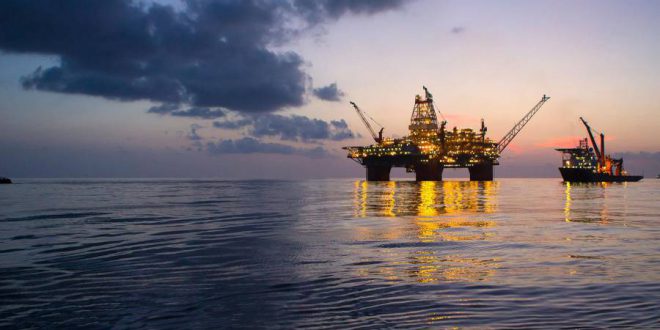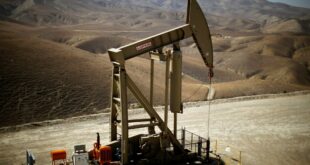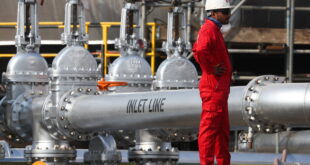Saudi Arabia is racing to restore oil production after a brazen drone strike on a key Aramco facility slashed its output by half. or about 5 per cent of world supply. an assault that the U.S. has blamed on Iran.
State energy producer Saudi Aramco lost about 5.7 million barrels per day of output after 10 unmanned aerial vehicles on Saturday struck the world’s biggest crude-processing facility in Abqaiq and the kingdom’s second-biggest oil field in Khurais. the company said.
The attack will likely rattle oil markets and cast a shadow on Aramco’s preparations for what could be the world’s biggest stake sale. It’s also set to escalate a showdown pitting Saudi Arabia and the U.S. against Iran. which backs proxy groups from Yemen to Iran and Lebanon.
The disruption is “quite significant.“ Mele Kyari. chief executive officer of state producer Nigerian National Petroleum Corp.. told Bloomberg Television on Sunday. “If it’s protracted it could be a big challenge for the oil markets.“
The attack is the biggest on Saudi Arabia’s oil infrastructure since Iraq’s Saddam Hussein fired Scud missiles into the kingdom during the first Gulf War. The damage highlights the vulnerability of the Saudi industry that supplies 10 per cent of the world’s crude oil. The kingdom’s benchmark stock index tumbled as much as 3.1 per cent on Sunday in Riyadh.
Houthi rebels in Yemen claimed responsibility for the attacks. but U.S. Secretary of State Michael Pompeo blamed Iran directly without offering evidence for that conclusion. Iran’s Foreign Ministry described Pompeo’s remarks as “blind and fruitless accusations.“
Saudi oil facilities as well as foreign tankers in and around the Persian Gulf have been the target of several attacks over the past year. The escalation coincided with the President Donald Trump’s decision to pull the U.S. out of the 2015 nuclear agreement with Iran and re-imposed crippling economic sanctions against the Islamic Republic.
The Houthis. who are fighting Saudi-backed forces in Yemen. have claimed responsibility for most of the strikes against Aramco installations.
Aramco Repairs
“Work is underway to restore production and a progress update will be provided in around 48 hours.“ said Amin Nasser. Aramco’s president and chief executive officer. Aramco is working to compensate clients for some of the shortfall from its reserves.
Saudi Aramco. which pumped about 9.8 million barrels a day in August. will be able to keep customers supplied for several weeks by drawing on a global storage network.
The Saudis hold millions of barrels in tanks in the kingdom itself. plus three strategic locations around the world: Rotterdam in the Netherlands. Okinawa in Japan. and Sidi Kerir on the Mediterranean coast of Egypt.
A satellite picture from a NASA near real-time imaging system published early on Sunday. more than 24 hours after the attack. showed that the huge smoke plume over Abqaiq had dissipated completely. But four additional plumes to the south-west. over the Ghawar oilfield. the world’s largest. were still clearly visible. While that field wasn’t attacked. its crude and gas is sent to Abqaiq and the smoke most likely indicated flaring. When a facility stops suddenly. excess oil and natural gas is safely burned in large flaring stacks.
U.S. Reserves
The U.S. Department of Energy said it’s prepared to dip into the Strategic Petroleum Oil Reserves if necessary to offset any market disruption.
Saudi Arabia. the biggest producer in the Organization of Petroleum Exporting Countries. has been leading the group in production cuts to mop up a surplus of crude in the market. So when half of Saudi Arabia’s production is knocked out. the question is how long the disruption lasts.
“The global economy can ill afford higher oil prices at a time of economic slowdown.“ Ole Hansen. head of commodities strategy at Saxo Bank A S in Copenhagen. said in an emailed response to questions. So while a surge in prices driven by lower supply “may temporarily remove the focus on slowing demand. it could. if prolonged. potentially reduce demand growth expectations even more.“
 Iran Energy News Oil, Gas, Petrochemical and Energy Field Specialized Channel
Iran Energy News Oil, Gas, Petrochemical and Energy Field Specialized Channel




